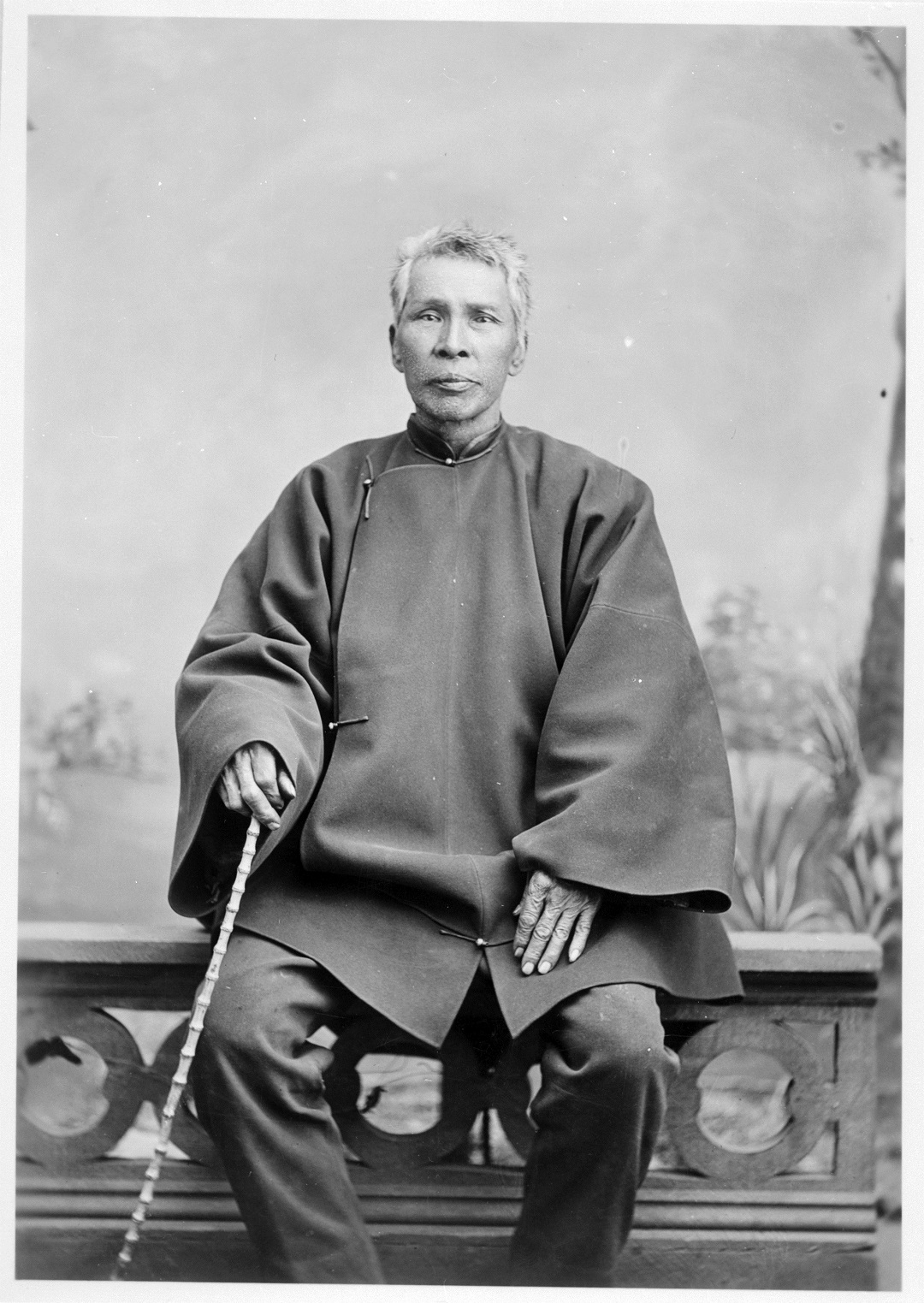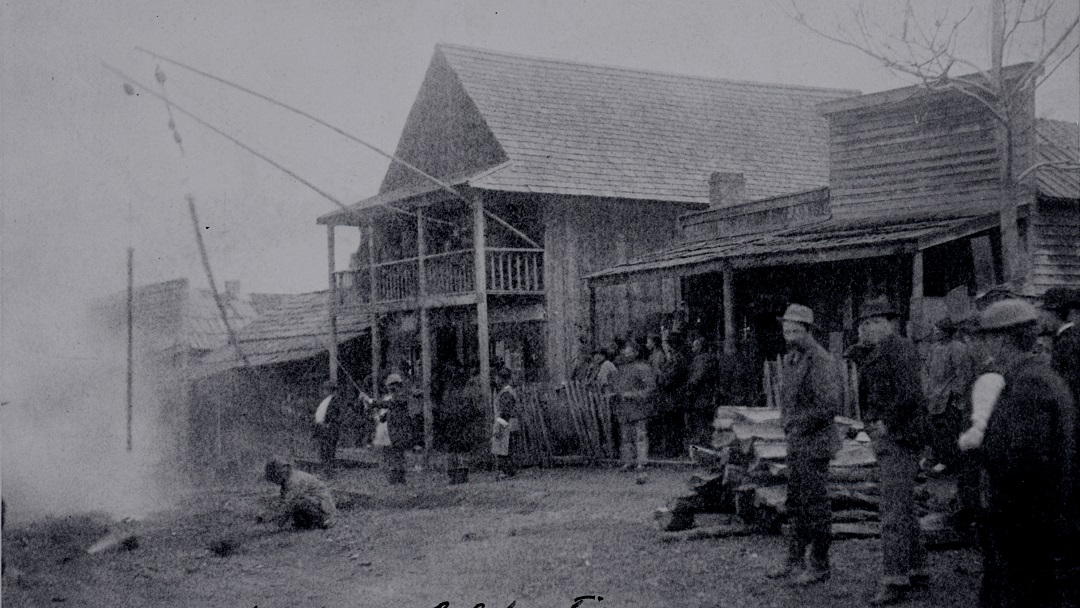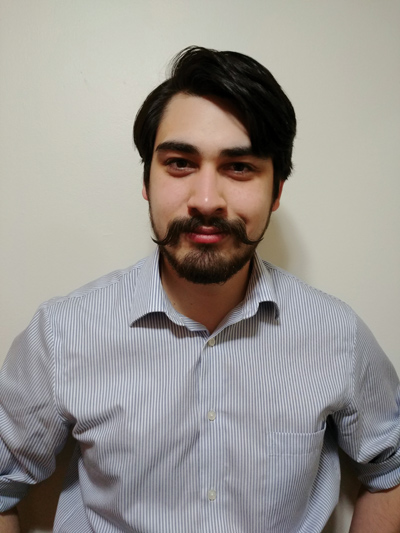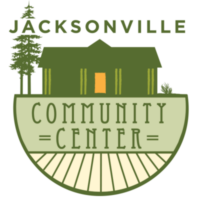
19th Century Chinese populations have historically been mis- or under represented. Portrayed as ethnic enclaves, segregated from the larger communities they are a part of by a seemingly vast cultural divide, never being seen as Americans like their immigrant neighbors. The Southern Oregon University Laboratory of Anthropology (SOULA) and historical organizations such as the Southern Oregon Historical Society (SOHS) have spent years studying the Chinese diaspora—and this has helped change how we look at our own history here in the Rogue Valley, providing nuance and depth. This is especially true when taking an individual look into some of the residents of Chinese descent who helped shape Jacksonville and the greater Rogue Valley community.
Perhaps the most famous example is Gin Lin, who like many miners from around the globe traveled to Jacksonville during the height of Jacksonville’s gold rush. Gin Lin was one of the valley’s most successful prospectors and business owners. As one of Jacksonville’s high society, his trips into town were often noted. During his time here he adopted western style dress, and cut his hair short forgoing the traditional fashion of his homeland.
 SOHS 1142: Portrait of Gin Lin, date unknown, taken by Peter Britt, courtesy of SOHS.
SOHS 1142: Portrait of Gin Lin, date unknown, taken by Peter Britt, courtesy of SOHS.
While mining was the most common occupation for Chinese immigrants in the mid-19th century, at its height the Jacksonville Chinese Quarter was home to several businesses providing essential goods and services to the Jacksonville community. Chinese Laundries were an important part of early western communities, and Jacksonville had several. One of better known wash houses was operated by Lim Wang, whose clientele included Peter Britt. A person of perseverance, after fire destroyed his business and much of Jacksonville’s Chinese neighborhood in 1888, he managed to rebuild and continue conducting business for years to come. Another laundry owner, Wong Goon, also ran a labor contracting firm and used his brick and mortar business on Oregon Street to connect Chinese individuals with work in mining and railroad construction. His standing in the community can be seen in local newspapers of the 1880s, offering congratulations on the birth of his child, and solemn farewells at his passing.
 SOHS 1154.10: Portrait of Lim Wang, Photograph taken by Peter Britt, courtesy of SOHS.
SOHS 1154.10: Portrait of Lim Wang, Photograph taken by Peter Britt, courtesy of SOHS.
Tsi Quoy, one of few women who emigrated from southern China in the 19th century, lived in Jacksonville long enough to witness its “boom” and “bust.” Tsi Quoy stayed in Jacksonville’s Chinese neighborhood long after her peers left to seek more sustainable economic opportunities or to avoid the discriminations adopted by the nation after the Chinese Exclusion Act. As Jacksonville moved into the 20th century, Tsi Quoy, as a long time resident, became somewhat of a symbol of the town’s “glory days”. She makes appearances in Pinto Colvig’s memoirs as a kindly elderly woman he would often visit as a child. In 1910, the community worked to grant Tsi Quoy a pension from the county courts, an allowance given to other early Rogue Valley pioneers when they could no longer work to support themselves.
 September 15, 1910 Medford Mail Tribune
September 15, 1910 Medford Mail Tribune
This year of the Ox, the New Year’s celebration held by the Southern Oregon Chinese Cultural Association (SOCCA) in Jacksonville will be different than those in previous years. Albeit a virtual affair, this should in no way hamper the representation and traditions Rogue Valley residents have celebrated in the past, whether it be the 2020s, or the 1860s. To help contribute, SOULA has expanded the Chinese history brochure created in 2018 into an online story map, allowing users near and far to learn more about Jacksonville’s Chinese diaspora roots and the residents who helped build the modern community. This virtual tour can be accessed with the following link: Jacksonville Chinese History Tour.
 SOHS 1505: 19th Century Jacksonville Chinese New Years celebration on Main Street, date unknown, courtesy of SOHS
SOHS 1505: 19th Century Jacksonville Chinese New Years celebration on Main Street, date unknown, courtesy of SOHS
 About the Author: Keoni Diacamos
About the Author: Keoni Diacamos
Keoni Diacamos is a local archaeologist living in the Rogue Valley since 2011, having earned his Bachelors in Science from Southern Oregon University. Since graduating in 2018 Keoni has worked with SOULA, the National Park Service, and private cultural resource management throughout Southern Oregon and Northern California. He also volunteers at SOHS as an artifact collections assistant.

